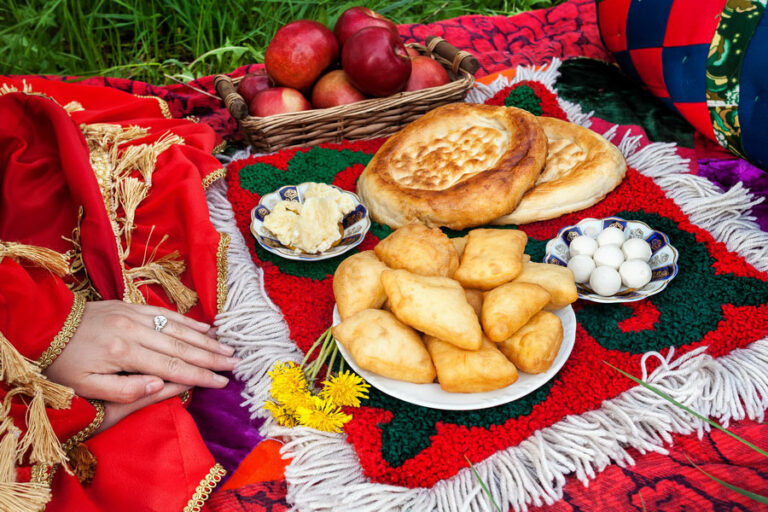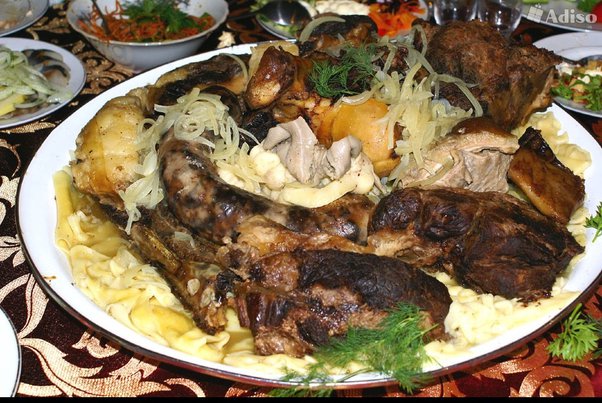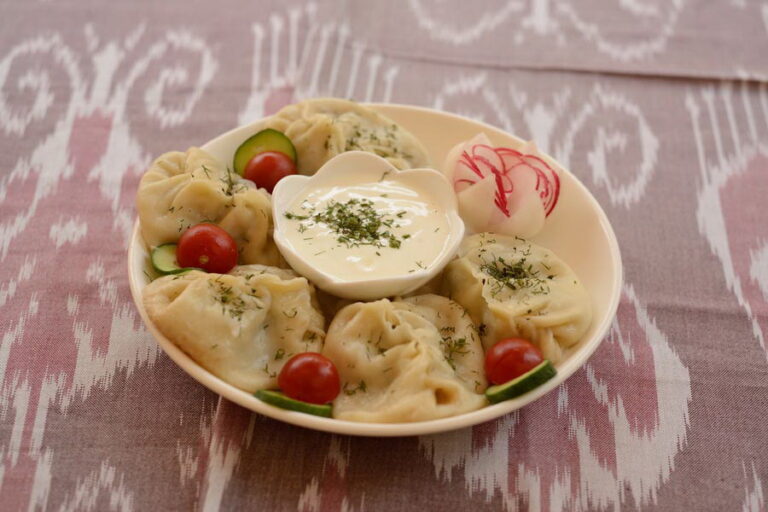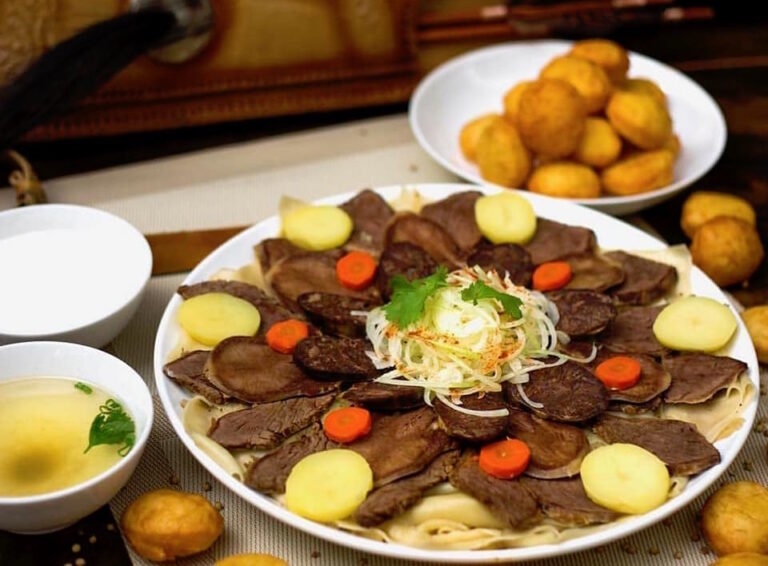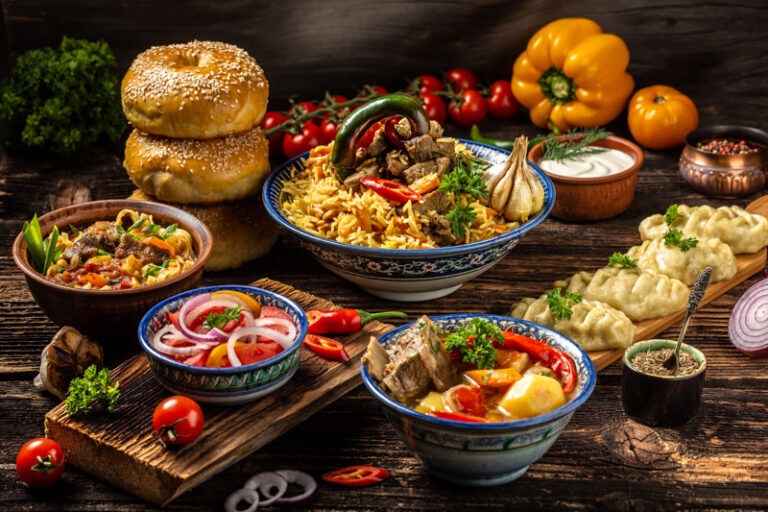Introduction: Kazakhstan’s Street Food Scene
Kazakhstan is a country located in Central Asia, known for its rich cultural heritage and diverse cuisine. The country’s street food scene is no exception, offering a wide range of delicious and affordable snacks and meals that are popular among locals and tourists alike. From traditional dishes to modern twists on classic favorites, Kazakhstan’s street food scene has something to offer for everyone.
Beshbarmak: The National Dish
Beshbarmak is the national dish of Kazakhstan and a staple in the country’s cuisine. It consists of boiled meat (usually lamb or beef) served on top of boiled noodles, with onions and potatoes as accompanying vegetables. The dish is often eaten with the hands, with the name “beshbarmak” meaning “five fingers” in Kazakh. Beshbarmak is commonly found in restaurants and food markets throughout Kazakhstan, and is a must-try for anyone looking to experience the country’s traditional cuisine.
Samsa: Central Asian Meat Pies
Samsa is a popular street food in Kazakhstan that is similar to the Indian samosa. The dish consists of pastry filled with minced meat (usually lamb or beef), onions, and sometimes potatoes or vegetables. The filling is then baked in a traditional oven, giving the pastry a crispy texture and savory flavor. Samsa is a common snack food in Kazakhstan, often sold by street vendors or in food markets. It is also a popular dish during holidays and celebrations.
Baursak: Sweet or Savory Fried Bread
Baursak is a type of fried bread that is common in Kazakhstan and other Central Asian countries. The bread is made from dough that is shaped into small balls or triangles, then fried until golden brown. Baursak can be served as a sweet or savory snack, depending on the ingredients added to the dough. Sugar or honey is often added for a sweet version, while salt and spices are added for a savory version. Baursak is a popular street food in Kazakhstan, often sold by vendors on the side of the road or in food markets.
Lagman: Noodle Soup with Vegetables and Meat
Lagman is a noodle soup dish that is popular in Kazakhstan and other Central Asian countries. The soup consists of handmade noodles, vegetables (such as peppers, onions, and carrots), and meat (usually beef or lamb). The dish is often spiced with cumin, coriander, and other herbs and spices to give it a flavorful taste. Lagman is commonly found in restaurants and food markets throughout Kazakhstan, and is a filling and satisfying meal that is perfect for a cold day.
Shashlik: Grilled Meat on Skewers
Shashlik is a popular food in Kazakhstan and other Central Asian countries that consists of grilled meat (usually lamb or beef) on skewers. The meat is marinated in a mixture of spices and yogurt before being grilled over an open flame, giving it a juicy and flavorful taste. Shashlik is often served with onions, tomatoes, and flatbread, and is a popular street food in Kazakhstan that is sold by vendors in food markets and at festivals. It is also a popular dish during holidays and celebrations.

